

Complementary Veterinary Medicine
Branch of the New Zealand Veterinary Association



Branch of the New Zealand Veterinary Association
Liza Schneider: President
Rose Unsworth: Secretary/Treasurer
Jacqui Snell: Editor
Committee:
Viv Harris

To provide educational opportunities and support vets, as well as the public to make use of integrative medicine, thus encouraging sustainable healthcare options and working towards a healthier plan

Rebecca Brown
Wendy Dixon
Jacqui Snell
Barbara Stumbles
Rochelle Kerr
Contact - Email: holistic@vets.org.nz
In this issue
Presidents Report
NZVA – Member Advisory Group Update –Dr Liza Schneider
Rose’s Blog
NZVA’s Outstanding Service Award –Awarded to – Dr Rose Unsworth
Vaccinate or Titre Test – Ian Denby
Some Observations on the Treatment of Superficial Pyoderma with Totarol – H Ward, AG Bell, JP Bridges, BR Jones
Case Study - Pippin – The Chihuahua with Progressive Alopecia – Dr Natasha Lilly
SustainaVet – Animals, People & the Environment
SustainaVet – Are You Aware of Vet Salus #2? – Lewis Griffihs
CVMB – Online Learning Opportunities
SustainaVet
Join us on social media!
What a wonderful NZVA Centenary Conference! Congratulations and many thanks to our NZVA team for creating this successful event and a huge thank you to Rose Unsworth, our secretary for organising our stream as well as our excellent speakers. Our speakers did a fabulous job of sharing older and new information, therapies, and techniques to help enhance the health and well-being of our patients and add to our job fulfilment as well as improve client satisfaction.
We are so proud of Rose, who was awarded the NZVA’s Outstanding Service Award by NZVA President Kate Hill at the Centenary Dinner. Rose is one of the NZVA’s longest serving SIB committee members. She provides quality services to our members and goes above and beyond to support our SIB, the NZVA as well as our broader profession and community. Congratulations Rose!
Rose also organised the SustainaVet stand in the conference exhibition hall which was attended to by a number of volunteers including NZVA’s Climate Change Ambassador Jane Ough, Massey’s Faculty of Veterinary Science Green Team leader CeeJay Spiller and VetSalus’s Warren Webber. The stand had many visitors encouraging our professions’ positive approach to embrace climate action as well as collaborating and contributing to the health of our environment.
I thoroughly enjoyed being part of the recent NZVA Annual Strategy Day as our CVMB MAG (Member Advisory Group) representative. I am delighted to report that One Health and Collaboration are included in our top 3 NZVA priorities for the next year. Our NZVA Climate Change Ambassador Jane Ough has been making great headway broadening awareness and opportunities in our profession to help our environment. To be proactively involved, if you or a representative of your practice hasn’t yet signed up, please enroll as an NZVA Climate Champion at https://emailcampaigns.nzva.org.nz/t/rl-ttpihe-buduhvmu-j/
Having always been privy to the positive outcomes of integrative veterinary practice, over the years I have found it difficult to understand why complementary therapies have been so slow to be embraced by mainstream practice. It has been interesting for me to learn in latter years that a major undertone of resistance is simply that collaboration and the underlying values that go with it, including mutual respect and collegiality, have not been a priority within our culture or profession. It is very heartening that these are coming to the fore as priorities of our NZVA. This will help to facilitate more appreciation for all of you who are courageous enough to practice “outside of the square” and embrace complementary therapies and an integrative approach to help your patients.
As always, thank you to our advertisers and contributors, and thank you to Jacqui and Rose for compiling this newsletter.
Enjoy your read!
Liza Schneider President of Complementary Veterinary Medicine Branch of the New Zealand VeterinaryBranch of the New Zealand Veterinary Association

The NZVA MAG is made up of representatives from each of 9 SIBs (Special Interest Branch). We regularly meet to contribute member feedback and concerns to our NZVA office and board and work together to shape our organization continually and proactively to better serve our members, have their needs met and support them to have fulfilling careers.
It was a privilege and pleasure to be part of the recent NZVA Annual Strategy Day as our CVMB MAG representative. It was a positive and productive day to ensure that we review the NZVA’s long-term strategy, identify any changes that need to be made and agree on priorities for the next year.
In the NZVA’s survey data, checking in on member’s priorities, there was a clear trend for support of recent activities but it was identified that there has been a need to condense the previous list of 10 priorities, especially since there is overlap between these.
I presented our CVMB priorities which were based on the difficulty of our members practicing integrative medicine and not being supported and sometimes being bullied by colleagues as well as our holistic approach and the importance of environmental sustainability.
I asked for the following 3 priorities / outcomes:
1. One Health, including environmental sustainability continues to be prioritized.
2. Our NZVA members have congruent values inspired by a bigger vision.
3. Our veterinary community take pride in leading the way to a sustainable future and are valued by our society.
I am delighted to report that One Health and collaboration are included in our top 3 NZVA priorities for the next year and collegiality continues to be a high priority embedded amongst our other 2 priorities.
The following 3 have been agreed to by our Board and MAG as priorities for 2024:
• Workforce Sustainability
• Advocacy and Communication
• One Health/Collaboration
As you may imagine, the scope of work for these areas is huge but it is heartening to know that our organization has come a long way grappling with issues of “survival” to now be in a place to be able to plan proactively for the future and start to consider the “bigger picture” and how as vets, at the centre of our One Health Model, we are well-positioned to drive positive change in our society and strive forward to a more sustainable future where we are able to thrive.
If you have any questions or concerns that you would like directed to our NZVA leadership or wish to know more, please don’t hesitate to contact me.
Liza Schneider liza@holisticvets.co.nz Complementary Veterinary Medicine Branch of the NZVA – Winter 2023
Our secretary / treasurer is a lady of many talents and has several interesting and invaluable insights to share.
What an amazing month June has been. Conference 2023, one hundred years of the New Zealand Veterinary Association celebrated in style and what style. Congratulations to all of the team for turning on a truly remarkable event.
On a personal note I went to Te Papa with my daughters for its opening. It was magical and to be there to celebrate our centenary was a lovely moment.
On an even more bizarre trip down memory lane I wore the same dress for our presentation day as I wore to my first ever conference dinner in Auckland at the Sheraton Hotel. I lived in Ashburton then and hadn’t packed a posh frock so it was an emergency dash to find one. So vintage vet with vintage frock was the overlying theme!
There were a couple of keynotes at the event. Seeing Craig Irving being honoured by Life Membership was humbling. He epitomises everything that we should all aim to be. When you can be in the outback of Australia without an opthalmoscope and a desperate email to Craig will get you assistance and advice, then you know that he is indeed a giant among men.
Jane Ough, Richard Kirton and South Wairarapa Vet Services being awarded the Environmental Sustainability Award was another highlight. As a profession we are subject to so many demands on our time and resources and planet earth is often way down our list of priorities. Again, this award represents another coming of age moment for all of us and next year I anticipate seeing a lot of businesses and practices stepping up and really starting to take those first steps that will make a difference.
If we reflect on Liza our President’s NZVA Veterinary Impact Award in 2020 the key links for all of us were the One Health model, environment and health that are so intertwined that we need to be respectful and mindful of one in order for the other to thrive.
AMRSA is still an overwhelming time bomb ticking away and again our conference presentations, in particular Jacqui Snell’s ozone therapy and its applications combined with Wendy Dixon’s presentation on mushrooms and their diverse uses opens up doors to effective treatment pathways while minimising antibiotic use. Their references, in keeping with our need to provide substantive evidence bases for our approach, demonstrated their dedication to look for alternatives that work, can be integrated into everyday clinical practice and are accessible and practical.
Liza Schneider, President CVMB, Jacqui Snell, Newsletter editor, Viv Harris ex-President, Rose Unsworth, Secretary / Treasurer, Tanya Ungerer, committee member and Wendy Dixon, committee member presented at this year’s conference.
 Complementary Veterinary Medicine Branch of the NZVA – Winter 2023
Complementary Veterinary Medicine Branch of the NZVA – Winter 2023

Branch of the New Zealand Veterinary Association

One presentation represents hours of research, collating and technical skills. Thank you to those who made it to our presentations, I recognise that it can be difficult to choose between streams but would really encourage you to drop into the Complementary Veterinary Medicine room. There are some amazing treatment options available and our presenters have done the hard work for you.
Aglobal market-leading range of probioticproductsnow available at major wholesalers
Pro-Kolin+ to treat uncomplicated diarrhoea, SynbioticD-Cfor everyday gut health support, Pro-Kolin Enterogenicfor chronic gastrointestinal support and Cobalazorb ahigh concentration B12 and Folatesupplement

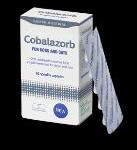
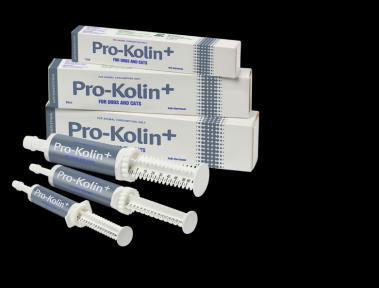
For support during gastrointestinal upset, there’saperfectlynatural solution for catsand dogs.

Contact your VeterinaryTerritory Manager Kathryn Goodhue on +64 272 439 015 or kathryn goodhue@adm com for product training or technical enquiries
 Complementary Veterinary Medicine Branch of the NZVA – Winter 2023
Complementary Veterinary Medicine Branch of the NZVA – Winter 2023
 By Dr Liza Schneider
By Dr Liza Schneider
Rose’s nomination included a number of letters of support from veterinary and nursing colleagues expressing their support of Rose being a worthy recipient of this award.

I have known Rose since I started working as a vet in 2000 as a new graduate. At that time, Rose was a committee member of the NZVA’s Holistic Veterinary Society and she introduced me to this SIB. Rose has served the NZVA as a volunteer for more than 22 years and always extended herself to ensure that the needs of our SIB, the NZVA and those of the greater profession as well as our society are considered and addressed as far as possible.
Rose has been instrumental in the operations and strategy of our SIB, serving as treasurer and secretary. She has recruited and manages the corporate sponsors of our newsletter, regularly writes for our CVMB newsletter and occasionally features in Vetscript (references found on Sci-Quest listed below). Rose always thinks ahead, considering opportunities to collaborate in a win-win manner with veterinary colleagues, corporates and other organisations including international networks of vets. She always aims to drive change for the benefit of the “greater-good”.
Rose has been responsible for organising our SIB’s conferencing and has donated countless hours over the years in just this role which she always performs to the highest standard considering the needs of our members as well as the opportunity to educate the NZVA greater membership about the benefits of complementary therapies and their responsible use. This is a massive job and Rose always takes it on with grace, not expecting anything in return but simply knowing that she has done a good job!
To me personally, over the years, Rose has been a mentor, pillar of strength, leader, inspiration and so much more, initially as a young vet and from 2010 as co-committee members of our SIB after she recruited me to serve as president.
As well as running her own practice in Hawkes Bay and raising a family (in the face of being mauled by a dog in a veterinary consultation that severely damaged her face), in recent years, Rose has been locuming in NZ and in various parts of the world focusing on helping vets in dire situations or charities that need the help of a capable vet. This is often in remote parts of the world, which comes with challenges that take a special person to navigate.
Rose has always had a good understanding of the “bigger picture”, driving insight and support for the valuable role veterinary professionals play in our society and the important contribution that vets have in the One Health Model. An important part of this is the health of our environment. In recent times our NZVA has embraced environmental sustainability as a priority. Rose has contributed immensely to this by always considering the health of our environment as a priority of our SIB and being a proactive member of SustainaVet, an NZ-based organization of volunteers whose purpose is to facilitate collaboration and provide a depository for resources and ideas to support, encourage and guide our
Complementary Veterinary Medicine Branch of the NZVA – Winter 2023
veterinary community to apply the concepts of sustainability and ultimately regenerative practice congruent with our one health model.
With Rose’s suggestion, the NZVA kindly donated SustainaVet a stand at the 2022 NZVA conference. Rose organised this stand recruiting and managing volunteers to man the stand as well as the collaboration of veterinary organisations that contributed content. One of these volunteers was Jane Ough who has now become our NZVA Climate Change Ambassador. Additionally, Rose proposed the concept of the NZVA Sustainability Award which was awarded for the first time this year.
Rose manages SustainaVet’s social media page https://www.facebook.com/groups/3034608190134330 as well as our CVMB SIB’s https://www.facebook.com/groups/260730070711007 ensuring regular and interesting content is posted to engage our members.

Rose has been a pioneer in our profession, responsibly integrating complementary therapies to help veterinary patients that have not had sufficient improvement of their health and well-being with conventional veterinary medicine / surgery alone. Over the years, many more vets have done this and unfortunately there are many who have been bullied, treated unkindly and with disrespect by veterinary colleagues. Rose has always been there to support vets who have the courage to go the extra mile and integrate complementary therapies to improve the health and welfare of veterinary patients. We have worked together to evolve thinking, cultivate respect and appreciation as well as collegiality within our profession. Thankfully this nasty behaviour is no longer prevalent from veterinary colleagues.
In her community, Rose volunteers for a variety of charities. She is an upstanding citizen and brings pride to our veterinary profession. Rose deserves special recognition for her services for and on behalf of the NZVA. She has worked tirelessly, volunteered an enormous amount of her time over an extended period of more than 22 years and is likely to be one of the NZVA’s longest serving SIB committee members. She provides quality services to our members and goes above and beyond to support our SIB, the NZVA as well as our broader profession and community
We are so proud of Rose receiving this award, acknowledging her outstanding service.
Complementary Veterinary Medicine Branch of the NZVA – Winter 2023Complementary Veterinary Medicine
Branch of the New Zealand Veterinary Association

 Complementary Veterinary Medicine Branch of the NZVA – Winter 2023
Complementary Veterinary Medicine Branch of the NZVA – Winter 2023
Do pets really need vaccinating or are they already protected?
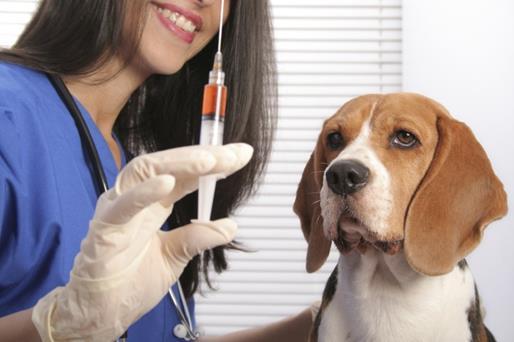
When the editor asked me to write something about our products and titre testing, I found myself confronted with a plethora of papers and a mountain of background information which just didn’t seem right to confine to a one page summary – what about the theory and rationale behind titre testing? So this is the first of 3 parts where we can, albeit briefly, examine and explore some of the background, issues and implications of the tools and techniques in protecting our furry friends – and the part this relatively recent new tool, titre testing, plays in this.
There is little doubt that widespread and regular vaccination of pets has had significant benefits in the control of major infectious diseases. We have seen the practical eradication of canine distemper and hepatitis from some urban dog populations and a significant impact on the severity and extent of parvovirus infection due to widespread use of vaccination in dogs in New Zealand.
Vaccines (and their associated disease protection) have been the traditional tools we have had at our disposal to achieve this. They have improved immensely over the decades by becoming more efficacious and at a younger age in puppies to allow effective and essential socialisation.
However, in the last 10-20 years, many questions have been raised about the duration of immunity and the need to continue vaccinating adult dogs when they may already be protected.
Thirty plus years ago, annual vaccination with CPV, CDV and ICH vaccines was the norm. Recently, titre tests have emerged as another tool in the toolbox, but it’s really only in the last 5-10 years that the cost has even come close to that for a CPV/CDV/ICH vaccine, so there has been a default to vaccine-centric use.
It’s important to know the where, how and when to use them both, what they can and can’t do, so that there is a move away from being vaccine focussed practitioners and avoid the previous “One size fits all” approach to vaccination and ultimately protection.
The World Small Animal Veterinary Association (WSAVA), Vaccination Guidelines Group (VGG) was convened in order to develop guidelines for the vaccination of dogs and cats that have global application. The first version of these guidelines was published in 2007, and updated in 2010 and 2016. The NZ Veterinary Association acknowledges and endorses the recommendations of the VGG including serologic testing. Core vaccines should not be given any more frequently than every three years, after the 6 or 12 month booster injection, because the duration of immunity (DOI) is many years and may be up to the lifetime of the pet1


The VGG has defined core vaccines as those which ALL dogs and cats, regardless of circumstances or geographic location should receive. Core vaccines for dogs are those that protect against canine distemper virus (CDV), canine adenovirus (CAV) and canine parvovirus (CPV).
“We should aim to vaccinate every animal with core vaccines. Non-core vaccines should be given no more frequently than is deemed necessary.”
Let’s firstly look at what vaccination does. Protection is the ability of a vaccine to prevent or reduce the effects of an infectious disease, when a vaccinated individual encounters a virulent infectious agent2 In regulatory terms, protection is defined in the context of a challenge experiment. Challenge studies to examine the length of protection are becoming harder to perform – the issue of ethics approval to carry out deliberately introducing and exposing animals to known disease effects, together with running a study for many years are becoming harder to justify and fund, and it’s a tough sell to shareholders of multinational vaccine manufacturers to justify approval to invest $millions – and then explain how they’re likely to sell less product!
Veterinary practitioners have moved away from annual vaccination to triennial and this is endorsed by NZVA. However reliance on vaccine manufacturers to fund further research is unlikely – and remember that even a 3 year DOI is a minimum DOI. For European vaccine licencing, 80% of vaccinated animals must be protected from disease, while 80% of unvaccinated controls must succumb to infection.
“For canine core vaccines, there is very strong correlation of protection between the presence of antibody and protective immunity from canine distemper virus (CDV), canine adenovirus (CAV), canine parvovirus (CPV) and feline panleucopenia (FPV)3”.
Numerous studies show that dogs appropriately vaccinated as puppies (ie as per current WSAVA guidelines) have persistence of protective serum antibody titres for long periods of time and up to the lifetime of the animal.

A second major concept regarding vaccination of dogs and cats has been the recognition that we should aim to reduce the ‘vaccine load’ on individual animals in order to minimise the potential for adverse reactions to vaccine products and reduce the time and financial burden on clients and veterinarians of unjustified medical procedures. The downside of over use of vaccines is the possibility of side effects, which range from mild and transient to severe and life-threatening. To reduce this likelihood of side effects, we need to avoid unnecessary vaccination.
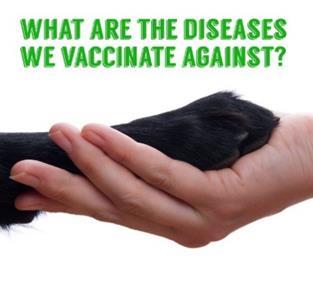
Questions about duration of immunity of vaccines and protection have been with us for some time. Deitemeyer in his book entitled Intuitive Immunology published in 2005, describes retention and persistence of immune memory in two different ways. The first, duration of immunity (DOI) is a narrower definition. A more comprehensive definition is known as duration of protection (DOP). DOP is a comprehensive measure of immunity that encompasses DOI, infection kinetics and the generation of effector mechanisms4 .
In veterinary medicine, length of protection was first brought to my notice when a foundation study conducted by Dr Fred Scott and including Dr Ron Schultz, nowadays a member of the VGG, published in the 1997 Feline Practice and the 1999 American Journal of Veterinary Research5. The 1997 study reviewed serology data while the 1999 study reviewed the challenge work. Vaccination
Branch of the New Zealand Veterinary Association

was given at 8 and 12 weeks of age. The challenge study took place 7.5 years following the last vaccination. In this study, preventable fraction is used because it reflects the protection by the vaccine in addition to natural protection and is explained as:
(incidence of disease in controls ) – (incidence in vaccinates) x100 (incidence in controls)
The study showed that the vaccine provided a preventable fraction of 100% against Feline Panleucopenia (FPV) challenge, 52% against Feline herpesvirus (FHV) challenge and 63% against Feline calicivirus (FCV) challenge.
Since then, there have been numerous studies to determine length of protection. WSAVA makes mention that it is simply not possible to induce better immunity in an individual animal by giving repeated vaccinations. Can we test dogs annually? Yes – you can, but if you were to collect and analyse the data that you generated within your practice, you would quickly find that annual testing is unjustified.
So, are there instances of titre testing with other diseases which warrant a titre test first? Poultry are not vaccinated for Newcastle Disease until a titre test is performed to establish if vaccination is justified. Similarly for humans MMR and Hepatitis B vaccination are often performed to check for immunity before heading down the vaccination route. Dutch veterinarians have completely adopted the titre test +/- vaccine approach in dogs and cats. Initially, this was driven by pet owners but the profession moved quickly to ensure they were adopting up-to-date recommendations. Most clinics in Holland no longer use core vaccines in adult dogs unless preceded by a titre test. It’s very much evidence based use of vaccine.
So how are we doing in NZ? Well – if it was a school report card, it would probably read “Could do better!” It appears we have been slow to adopt. Maybe clinics fear the worst – a decline in revenue? Or could it be that the concept is in the too hard basket and time-consuming to explain to pet owners? Or perhaps, the owners are not sure if it’s a wholly practical approach – and anyway “my vet knows best”?
The question has now evolved into how can we use vaccines judiciously (and titre tests) based on evidence?
Next issue, we’ll take a more in-depth look at Serological Testing and what’s available for in-clinic use.
1. Day, M.J., Horzinek M. C., Schultz, R. D., and Squires, R. A (2016) Guidelines for the vaccination of dogs and cats. Journal of Small Animal Practice 57, E1-E45
2. Day, M. J. The Role of Serology in Vaccination Decision Making. 43rd WSAVA Congress, Singapore 25-28 September
3. R. D. Schultz Considerations for the Titre Testing of Core Canine Vaccines. Biogal Galed Labs www.biogal.co.il
4. Deitemeyer, K. W., Rollin, B. E., Intuitive Immunology for Veterinary Medicine. Published May 2005
5. Scott, F. W., Long-term immunity in cats vaccinated with an inactivated trivalent vaccine. Am J Vet Res. 1999; 60(5): 652-8
Ian Denby has been involved in sales and marketing roles in the animal health industry since 1982, for the most part with two American multinational companies. As Companion Animal Vaccine Product Manager at SmithKline Beecham, he launched many companion animal vaccines such as Vanguard and Felocell growing these products to a dominant share of the CA vaccine market, and then as NZ Country Manager at Fort Dodge Animal Health marketing Cydectin and Eweguard moxidectin based product for production animals. He was also responsible for launching and growing the companion animal business for Fort Dodge Animal Health. Both companies were subsequently purchased by Zoetis.
Since 2011 he has been owner and director of Animal Solutions Ltd which markets and sells a range of in-clinic bench-top diagnostic tests including MegaCor Diagnostik’s FASTest for diagnosis of commonly occurring diseases such as Bovine calf scours, CPV, Giardia, FeLV/FIV and CDV/CPV antibody titre tests, together with the Biogal Labs titre test product VacciCheck, and SwissPlusiD microchips.
For further information on any of the FASTest, VacciCheck or SwissPluiD products, contact Ian on 022 066 2075 or visit their website at www.animalsolutions.co.nz or www.swissplusidnz.co.nz
 Complementary Veterinary Medicine Branch of the NZVA – Winter 2023
Complementary Veterinary Medicine Branch of the NZVA – Winter 2023
Complementary Veterinary Medicine
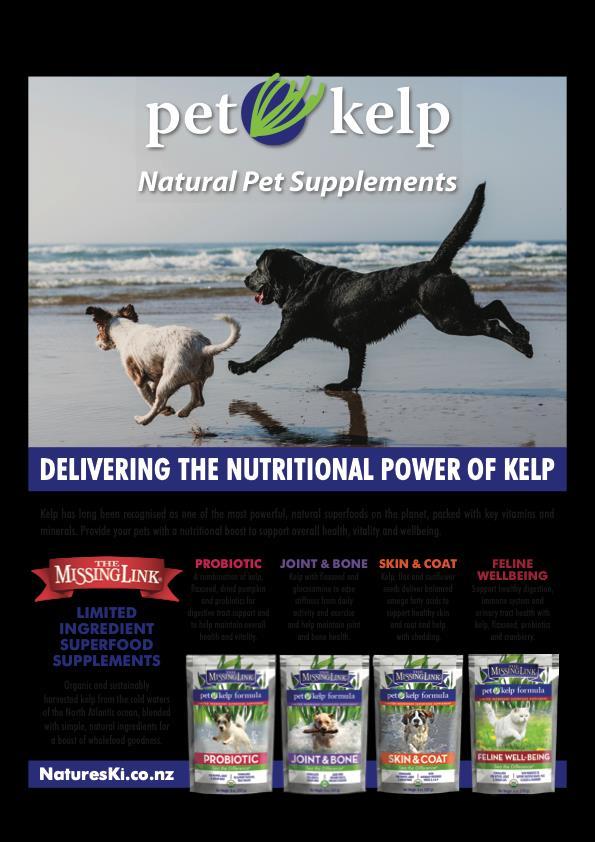
Branch of the New Zealand Veterinary Association
 Complementary Veterinary Medicine Branch of the NZVA – Winter 2023
Complementary Veterinary Medicine Branch of the NZVA – Winter 2023
Complementary Veterinary Medicine

Branch of the New Zealand Veterinary Association
 Complementary Veterinary Medicine Branch of the NZVA – Winter 2023
Complementary Veterinary Medicine Branch of the NZVA – Winter 2023
Branch of the New Zealand Veterinary Association

*Vetcare, 20 Chapel Street, Masterton, New Zealand
†3B Marama Road, Torbay, Auckland, New Zealand
ǂSchool of Veterinary Science, Massey University, Palmerston North, New Zealand
#28 Princes Street, RD 3 Katikati, New Zealand
§Author for correspondence
Superficial bacterial skin infection (superficial pyoderma) is common in dogs, being one of the most common conditions seen in veterinary practices in New Zealand especially in the summer. The major bacterial commensal and pathogen is Staphylococcus pseudintermedius but other bacterial pathogens are identified including Staphylococcus aureus (Schmidt 2017). Antibiotic resistant organisms including methicillin resistant S.pseudintermedius have been identified in dogs in New Zealand (Schmidt, 2017; Bell et al 2016).
Surface and superficial pyoderma include fold pyodermas (lip, face, vulva), impetigo, bacterial folliculitis, superficial spreading pyoderma and combinations of folliculitis and spreading pyoderma (Gross et al, 2005). Bacterial folliculitis is the most common pyoderma seen in dogs and has many clinical presentations: a follicular papule or pustule progressing to epidermal collarettes characterized by a circular area of hair loss with variable erythema, exudation, crusting and pigmentation. Pruritus may be present especially in atopic dogs where pyoderma is a co-factor that promotes itching.
Veterinary treatment of superficial pyoderma has included the administration of systemic and/or topical antibiotics or the application of local antiseptic agents. While a number of biocides have been used, 2-4% chlorhexidine is currently the most effective topical agent and the treatment of choice of many veterinarians based on trial evidence (Murayama et al2010, Loeffler et al 2011, Mueller et al, 2012).
Totarol, an aromatic diterpenoid phenol, is a natural organic extract of the totara tree (Podocarpus totara) which has potent antibacterial action against gram positive organisms in vitro (Kubo et al, 1992). Totarol was first isolated in 1937 (Short & Stromberg, 1937) but the medicinal properties of totara tree extracts were known to Maori for many years before. Totarol has been used as an antibacterial agent for skin infections and in other medications for people but there are no equivalent clinical data to support claims for the treatment of superficial pyoderma in dogs. Nevertheless, there are anecdotal reports of its use to treat skin infections in dogs.
The purpose of this pilot study was to confirm the efficacy of Totarol applied in a vehicle of sodium bentonite clay 1% w/v or as a 0.2% aqueous spray for the treatment of superficial bacterial skin infections in dogs. A positive control group of dogs was treated with 3% chlorhexidine wash, an accepted topical biocide treatment for dogs.
Complementary

Branch of the New Zealand Veterinary Association
Massey University ethics approval applied to the study (AEC/18 amended 04/17) and owner consent was obtained for all cases.
Eighteen client owned dogs of mixed age and breed were recruited from three veterinary practices in the North island. The dogs were presented for examination of their skin condition and a clinical diagnosis of superficial bacterial skin infection was made by the attending veterinarian based on the history and the characteristic clinical signs of superficial bacterial skin infection.(Fig 1)
Lesion(s) were scored for the presence of each of the following: erythema, pruritus, exudation, hair loss, and depth of the lesion, according to a linear scale) where 0=none, 1= mild, 2=moderate, 3=severe.
The same veterinarian scored the skin lesions for each dog at days 1, 7 and 28.
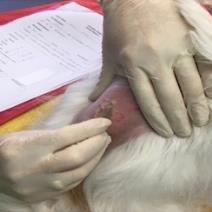
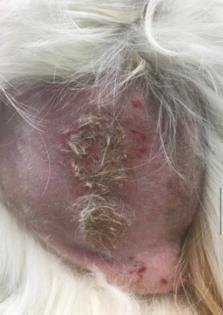
Crossbreed. A typical “hot spot” with moderate erythema, sparce papules, moderate exudate and fine crusts at visit 1.
Figure
Score difference was defined as the difference between day 1 scores and day 7 scores for the measures; erythema, itch, exudation, hair loss, depth and total score. Score differences for the three treatment groups were compared using the non-parametric Kruskal-Wallis test. The Dunn test (Dunn, 1964) was applied for multiple comparisons. The P values were adjusted for type I and type II errors using the Benjamini-Hochberg method. P values < 0.05 were considered significant. All analyses were carried out using R statistical software version 3.6.3 (R Development Core Team 2020; R Foundation for Statistical Computing, Vienna, Austria).
Cytology
An impression smear of the exudate was taken from the lesion(s), air dried, stained with Diff Quick. and examined (AGB).
A swab taken from the lesion was sent to a veterinary diagnostic laboratory for bacterial culture and antibiotic sensitivity determination.
Complementary Veterinary Medicine Branch of the NZVA – Winter 2023
 1. 9 Y Maltese Terrier
1. 9 Y Maltese Terrier
Branch of the New Zealand Veterinary Association
The selection of a treatment was randomly selected by dice throw. Based on the dice throw each dog was allocated to a treatment group (1 and 3 to group1, 2 and 4 to group 2, 3 and 6 to group 3):
1. 6 dogs were treated daily for 7 days with 3% chlorhexidine wash (PyodermRS, Virbac, Australia)
2. 6 dogs were treated daily for 7 days with topical 1% w/v totarol in medical grade sodium bentonite clay (Pet PuttyTM, Vetcarevets, Masterton, NZ)
3. 6 dogs were treated daily for 7 days with topical 0.2% totarol aqueous spray (TotaroTM, Vetcarevets, Masterton, NZ)
If necessary, hair was clipped from over and around the lesion and the owners were shown how to apply the topical medications to the lesion(s). A treatment sheet was provided for each owner which contained a full explanation of how treatment should be undertaken each day until the next visit.
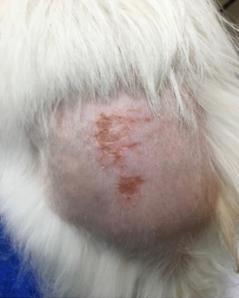
Each dog was examined 7 days after the first visit.(Fig 2) Medications were withdrawn and the dogs then re-examined 28 days after the first visit. Owners were asked to complete a short questionnaire on their experience using the prescribed products.
Figure 2 The same dog as Fig 1 after 7 days treatment with Pet PuttyTM There is superficial ulceration, resolution of papules and mild erythema. The hair over the lesion was clipped.
Table 1. The age, breed sex of each dog and the scores allocated to each dog for the clinical signs of; erythema, exudation, pruritus, hair loss, depth of lesion before treatment and at day 7 after treatment for each treatment group.
Complementary Veterinary Medicine Branch of the NZVA – Winter 2023


Branch of the New Zealand Veterinary Association

Figures 3. Box plots showing of the total scores for day 1 and day 7 and the difference between the score for dogs in each group treated with totarol spray, chlorhexidine and totarol/clay (Pet PuttyTM).
Surface cytology revealed cocci and neutrophils in 15 of 17 dogs. Yeast-like organisms, rod bacteria, melanosomes and red blood cells were seen infrequently and in very low numbers. The findings in all dogs supported a diagnosis of superficial bacterial infection.
Staphylococcus pseudintermedius was recovered from the lesion(s) in 15 dogs with all isolates being sensitive to antibiotics in common use by veterinarians. No isolate was multiantibiotic resistant Streptococcus dysgalactiae and Klebsiella spp were recovered from the lesions in two dogs. Other bacteria recovered from some dogs were regarded as contaminants or of questionable significance.
The two dogs with negative culture had evidence of bacterial infection on cytology. The transport delay in submission to the laboratory was considered the reason for a negative culture.
One dog from group 3 was excluded from the final results as it was bitten by another dog 4 days after treatment started. The bite injuries to this dog required antibiotic treatment. All remaining dogs in each treatment group improved, with resolution of most of their clinical signs and a reduction in their severity scores by day 7(Table 1). By day 28 the severity scores were zero for 15 dogs. One dog in the chlorhexidine group and one dog in the Totarol spray group still showed some signs both with a severity score of 2. The dog receiving Totarol spray resisted application by the owners. It had a score of 10 pre-treatment and 6 at 7 days.
There was no difference in effectiveness between the Totarol spray group and the chlorhexidine group but the improvement in the Totarol/clay group was significantly better than the chlorhexidine group (P=<0.031) (Table 2). There was no significant difference in the score reductions for each clinical sign in any group except for hair loss Figures 3 shows box plots for days 1 and 7 and the reduction (difference) in total scores for each treatment group.
All owners followed the requested treatment protocol and were positive about the result of treatment for their dog. Three dogs tried to lick off the Totarol/clay preparation after the first
Complementary Veterinary Medicine Branch of the NZVA – Winter 2023Branch of the New Zealand Veterinary Association
application but this did not affect the outcome for these dogs and further applications in the following days were tolerated well. One dog in the Totarol spray group did not accept the spray application and the owners found application difficult.
The antibacterial action of Totarol is established (Kubo et al 1992, Muroi and Kubo 1996, Guo et al 2015). The results of this study show that 0.2% Totarol aqueous spray or 1% w/v totarol in bentonite clay applied topically daily for 7 days achieved equivalent (spray) or better (clay) results than chlorhexidine wash for the treatment of superficial pyoderma. The two preparations containing Totarol were both effective.
The reason two dogs, one in the Totarol spray group and one in the chlorhexidine group, still showed signs at day 28 was not established. The score for the dog in the Totarol spray group at day 7 improved from day 1 but the dog resisted application and we suspect it received inadequate treatment; more prolonged treatment might have resulted in a better outcome. The dog in the chlorhexidine group that did not improve had equivalent scores at days 1 and 7 and although improved by day 28 the lesions had not resolved fully.
The significance of hair loss between the Totarol/clay and spray groups was confounded by clipping the hair over and around the lesion(s) in some dogs thus no weighting should be given to this finding.
The effectiveness of Totarol in this study is claimed due to its antibacterial properties but there is also evidence that Totarol has anti-inflammatory properties (Young et al, 1989) and also inhibits lipid peroxidation (Harraguchi et al, 1997). These properties were not investigated in this study but may have contributed to its effectiveness.
No methicillin resistant Staphylococcus spp. were recovered from any of the dogs but there is evidence to support Totarol’s antibacterial properties and efficacy against methicillin resistant Staphylococcus spp. (Kubo et al 1992, Kubo et al1994, Muroi et al 1996, Smith et al 2007, Guo et al 2015) which is an additional advantage if resistant strains are suspected or recovered.
Veterinarians involved in this study did not identify underlying predisposing causes for the pyoderma in any dog in the study population but the authors acknowledge that identification of predisposing causes of pyoderma e.g. atopy is important to assist recovery.
The role of topical antibacterial biocides is important and while chlorhexidine is the current biocide of choice for the treatment of superficial pyoderma in dogs, the effectiveness of Totarol in this study gives practitioners the choice of a biocide which could be prescribed instead of chlorhexidine.
The sample size for this study is very small for each treatment group but there is sufficient preliminary evidence to support the use of topical Totarol as a 0.2% aqueous spray or as a 1% w/v Totarol/clay preparation for the successful treatment of localised superficial pyoderma in dogs.
Healthy Pets New Zealand helped fund the project, IDEXX Laboratories (NZ) ULC for assisted with culture and sensitivity determinations, the practitioners who participated and
Complementary Veterinary Medicine Branch of the NZVA – Winter 2023


the owners of the dogs who returned their animals at the required revisit times and for completing the exit questionnaire.
Anonymous, Federal Drug Agency USA(FDA) www.fda.gov.foodingredientspackaging/gras/scogs/ucd260870,2015
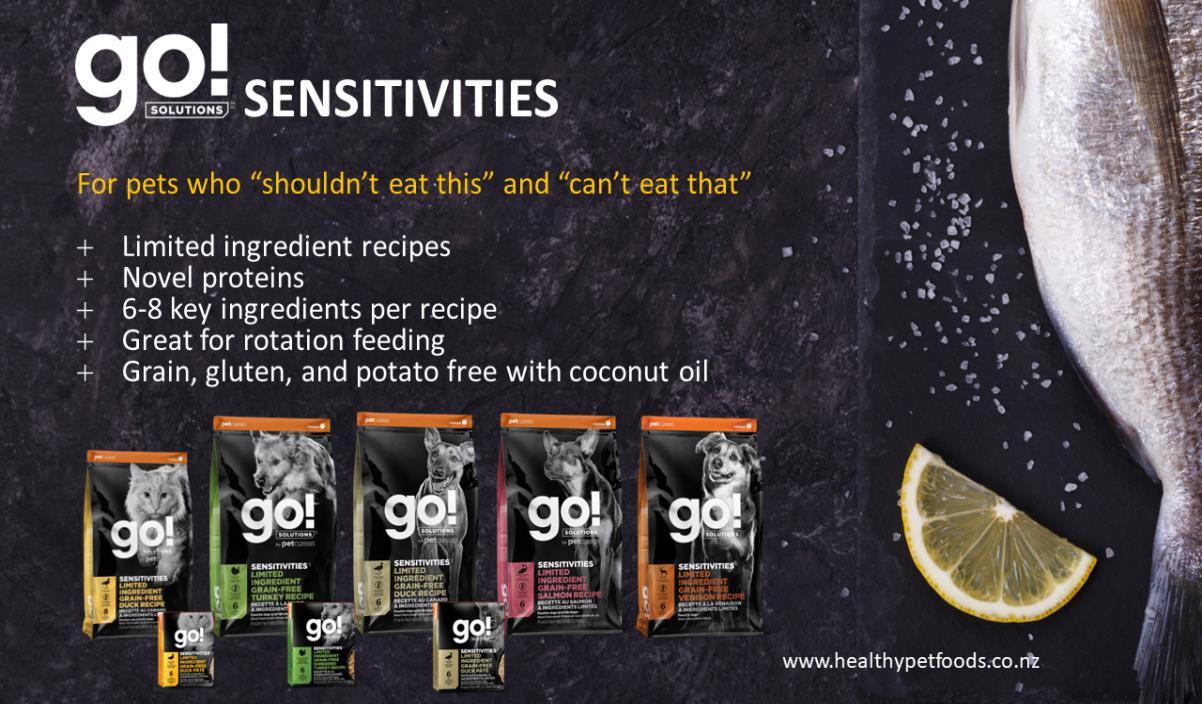
Bell AG, Combs GW, Cater B, Douglass C. First report of a mecA-positive multidrug resistant Staphylococcus pseudintermedius isolated from a dog in New Zealand. New Zealand Veterinary Journal.64,253-6, 2016. Dunn OJ. Multiple comparisons using rank sums. Technometrics 6,241-252,1964
Gross TL, Irke PJ, Walder EJ, Affolter VK. In Chapter 1, Pustular diseases of the epidermis, Skin Diseases of the Dog and cat Blackwell Science Ltd., pp 1-26, 2005
Guo N, Wenli L, Zaho X, Shi C, Zonghui L, Yu L. The synergy of Berberine chloride and totarol against Staph aureusin planktonic biofilm cultures. Journal of Medical Microbiology.64,891-900, 2015
Harraguchi H, Ishikawa H, Kubo I.. Anti-oxidative action of diterpenoids from Podocarpus nagi Pharma medica63,213-215,1997
Jaiswal R, Beuria, TK, Mohan R, Mahajan S, Panda,D. Totarol inhibits bacterial cytokinesis by perturbing the assembly dynamics of FtsZ.Biochemistry 46(14),4211-4220, 2007
Kubo I, Muroi H, Himejima M. .Antibacterial activity of totarol and its potentiation. Journal of Natural Products. 55, 1436-1440, 1992
Kubo I, Muroi H, Kubo H. Naturally occurring anti-acne agents. Journal of Natural Products 57,9-17, 1994
Loeffler A, Cobb MA, Bond R. Comparison of a chlorhexidine and a benzoyl peroxide shampoo as sole treatment in canine superficial pyoderma. Veterinary Record.169, 249-253, 2011
Mueller RS, Bensignor E, Bergvall K, Bond R. A review of topical therapy for skin infections with bacteria and yeasts Veterinary Dermatology 24,330-341, 2012
Muroi H, Kubo I. Antibacterial activity of anacardic acid and totarol alone and in combination with methicillin, against methicillin resistant Staphylococcus aureus. Journal of Applied Bacteriology 80,387-394, 1996
Murayama N, Nagata M, Terada Y, Shibata S, Fukata T. Comparison of two formulations of chlorhexidine for treating canine superficial pyoderma. Veterinary Record 167.532-533,2010
*Schmidt V. Methicillin resistant Staphlococcus pseudintermedius (MRSP) affecting canine and feline skin. Proceedings of the Dermatology Chapter Australian and New Zealand College of Veterinary Scientists, Science week pp 9-17,2017
Short WF, Stromberg HJ. .Totarol; part 1. Journal of the chemical society, 516-520, 1937
Smith ECJ, Kaatz GW, Seo SM, Wareham N, Williamson EM, Gibbons S. The phenolic diterpene Totarol inhibits multidrug efflux pump activity in Staphlococcus aureus Antimicrobial agents and chemotherapeutics 51,4480-4483, 2007
Young JM, De young LM. Cutaneous models of inflammation for the evaluation of topical and systemic pharmacological agents. in Pharmacological methods in contact inflammation. Alan R Liss Inc. pp 215-231, 1989
Complementary Veterinary Medicine Branch of the NZVA – Winter 2023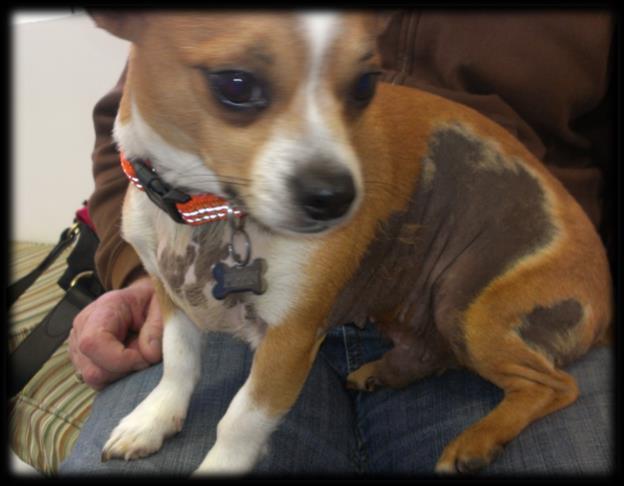
Pippin, a two-year-old MN Chihuahua, presented with a one-year history of progressive alopecia, diagnosed by his veterinarian as Alopecia X.

For review, Alopecia X or Adrenal Hyperplasia-Like Syndrome, is a rare, cosmetic skin condition characterized by areas of alopecia and hyperpigmentation as seen in the images of Pippin. For some unknown reason, the growth phase of the hair follicle is arrested which causes the hair loss. This condition can happen as early as one year of age but can also occur much later in life. There is no known therapy or treatment for this condition in conventional veterinary practice. His TCVM clinical presentation of weak, deep pulses, cold extremities, pale tongue with cracks and diffuse alopecia indicated a Blood Deficiency pattern.

Following Pippin’s first visit, our treatment plan included implementing a fresh, balanced, species appropriate diet, and a Chinese Herbal formula: Bu Gan Tang. Specifically, we used the Kan Essentials, Liver Support Formula, starting with the normal dosing for his body weight. After three months there was a mild improvement in hair growth, but it was not significant. During this visit, the Chinese herb dose was increased to double the amount daily. Over this time, the owner was in email communication and expressed excitement about the results.
The second image was taken after six months on the doubled dose of Bu Gan Tang, full hair coat regrowth was eventually achieved shortly after this image was taken. Pippin was slowly weaned off the Chinese herbs completely over the next six months. His owner was extremely grateful over the outcome.
Pippen was also very thankful for not having to shiver as much!
Case study courtesy of Dr Natasha Lilly, USA, DVM CVA
Branch of the New Zealand Veterinary Association Complementary Veterinary Medicine Branch of the NZVA – Winter 2023


Our Essentials of Veterinary Chinese Herbal Medicine short course is enrolling now for 14th August 2023 start!
This 8-week short course is designed for veterinarians with no prior training in Chinese herbal medicine You will learn the concepts of prescribing Chinese herbal medicine and some important herbal formulas you can apply in practice immediately
Visit www civtedu org/courses/essentials-of-veterinary-chinese-herbal-medicine
CIVT offers a total of 11 courses in Veterinary Chinese Herbal Medicine


11043NAT-Graduate Diploma of Veterinary Chinese Herbal Medicine is an accredited, postgraduate 2-year course It will give you the skills and knowledge to practice veterinary Chinese herbal medicine competently
We also offer 10 non-accredited Chinese herbal medicine courses ranging from 8-week introductory and short courses through to 2-year advanced certifications
So, whether you are a beginner or an experienced practitioner, CIVT can give you new TCM skills to help solve your most challenging cases All of our courses offer flexible, innovative online training in evidence based natural medicine
Visit www civtedu org/courses/chinese-herbal-medicine
civtedu org
Essentials of Veterinary Chinese Herbal Medicine (civtedu.org)
https://civtedu.org/courses/chinese-herbal-medicine

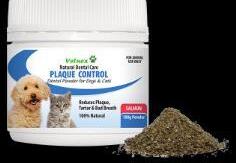

Branch of the New Zealand Veterinary Association
100%NaturalProducts
1 Asan aid in the prevention of tartar,plaque, calculus,bad breath and asafollow up for Stomatitisand Gingivitis
2 Proven active and referencesare attached
3 Convenient/easy to use chewsand powders
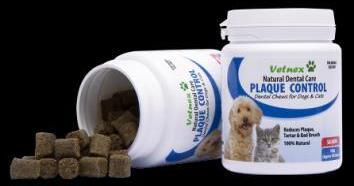

4 Highly palatable so high client and patient compliance “TheTreatthattreats”
5 Chewsadd mechanical action to theseaweed action
6 Multiple f avours
7 Ideal for fussy eaters
8 Five f avoursso clientscan rotate use
9 100% natural
References:
1. BaardsethE(7970).FoodandAgricultureO rganizationoftheUnitedNations Availablefrom:http://www.fao.org/docrep/O17/b0672e/b0672e.pdf
2. Kadametal(2015).Mar.Drugs2015,13,4270-4280;doi:10.3390/md13074270.
3. Abuetal(2013).InternationalJournalofBiologicalMacromolecules59:305-312.
4. Zhangetal(2074).Mar.Drugs72:4148-4164;doi:70.3390/md72074748.
5. Tamanai-Shacoorietal(2074).PLoSOne9(1OJ:e705475. doi:10.1311/journal.pone.0105475.
6. VanDijkenetal(2015).Clin.OralInvest 79:7507-1518,DOI70.7007/s00784-014-1383-2.
7. Gaworetal(2073).WeterynariaWPraktyce(VeterinaryinPractice)10.
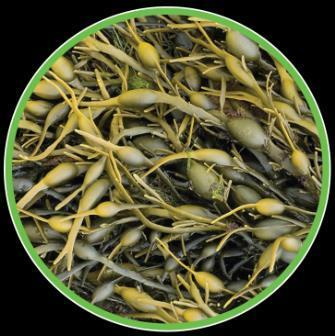
8. Gaworetal(2078).Front.Vet.Sci.5:768,doi:70.3389/fvets.2078.00168.
9. lsidorietal(2019):JournalofAppliedPhycology37:3275-3281.
Complementary Veterinary Medicine Branch of the NZVA – Winter 2023

Complementary Veterinary Medicine

Branch of the New Zealand Veterinary Association
 Complementary Veterinary Medicine Branch of the NZVA – Winter 2023
Complementary Veterinary Medicine Branch of the NZVA – Winter 2023
Branch of the New Zealand Veterinary Association

To collaborate on and drive change in our veterinary industry to encourage sustainable and ultimately regenerative veterinary practice.

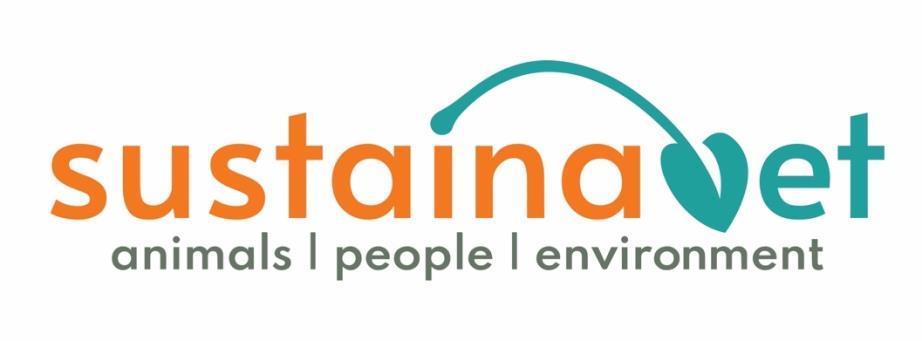
Wow, what a Conference. One hundred years and cake. Awards a plenty, and it was so good to see South Wairarapa Veterinary Services represented by Jane Ough and Richard Kirton step up and accept the Environmental Sustainability Award for 2023. It’s the first year! There were actually nine nominations and if that doesn’t make your heart sing what will.
SustainaVet were part of the Exhibitors stands, combining with VetSalus, represented by Warren Webber. Last year was our first public appearance and this year we were a destination stop. Clinic climate champions dropping in, vets and nurses from all over NZ wanting to find out more. Questions, hopefully a few answers but mostly just massive enthusiasm and a strong desire to actually be part of it.
We had several companies rock up as well, notably Royal Canin and their team complete with recycling bin, MAS are already part of the greening up your super (an excellent climate pledge and very easy to follow through with their skills and commitment) Ethical Agents, who have always had a strong ethic when sourcing and marketing alternative products which are so important in the war against antimicrobial resistance, the vet nurses from Vet Services Hawkes Bay, the team from CareVets. Sandy Cooper from Invercargill working with Jane Ough on low flow anaesthesia. All wanting to be part of the action.
We have a bunch of enthusiasts who can’t wait to connect with Julie South from Paws Claws and Wet Noses to spill it all on an eco-inspired podcast, so many new Clinic Climate Champions in the making and the promise that the one thing we will take home from Conference is that we need to start to take action.
A huge thank you to everyone who stepped up and made a climate pledge. The world literally will be a better place because of you.
Complementary Veterinary Medicine Branch of the NZVA – Winter 2023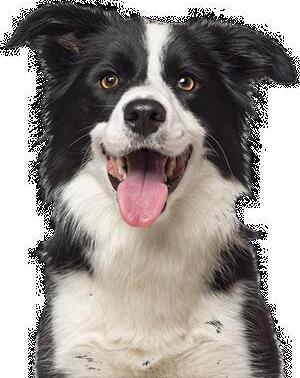
Branch of the New Zealand Veterinary Association

Huge vote of thanks to the New Zealand Veterinary Association for their support and invaluable assistance. We literally could not have been there without your generosity.
Here is the link to SWVS presentation: https://youtu.be/oQCaLvfSTXs
Here is the link to become a clinic climate change champion: https://www.surveymonkey.com/r/T32GQTD
Instagram for tips and ideas: https://www.instagram.com/sustainavetnz/
Facebook group for collaboration and discussion: https://www.facebook.com/groups/ 3034608190134330
Paws Claws & Wet Noses podcast: https://pawsclawswetnoses.fm
Our continuing educationwebinars provide accessible, inexpensive, targeted learning
Gain new skills through our extensive catalogueof webinars presented by leading veterinary educators from around theworld
Covering a broad range of topics suitablefor beginners to advanced practitioners
Average cost $70, providing CPD learning opportunities
All webinars include lecture notes and/or a PDF of theslideshow and a personalised CECertificate
Recorded webinars can be accessed immediately and viewed multipletimes
Browse our webinar catalogueby visiting wwwcivtedu org/webinars
civtedu.org
www.civtedu.org/webinars
Branch of the New Zealand Veterinary Association

Hopefully, the answer for some of you is now a resounding yes!
VetSalus shared a stand with at the recent NZVA Centenary Conference in Wellington and we were pleased to meet many of you and discuss the important issues of the day. This is just one example of VetSalus steadily expanding its influence and impact, while working cooperatively with other organisations including Sustainavet in New Zealand and Vet Sustain in the UK.

As you may recall, if you read the last edition of this newsletter, VetSalus is a business initiative which has been founded by a group of veterinarians working in the United Kingdom, New Zealand and Scandinavia. It plans to further expand its network, with several other countries currently interested in joining the group. Following its launch during the World Buiatrics conference in Japan, 2018, development has been somewhat stalled by COVID-19 but this time was utilised to place the business on a firm footing.
VetSalus is currently building networks and capability, while developing a range of educational materials to support veterinarians and consultants working on One Health projects and with global food businesses. VetSalus is also playing a significant leadership role within the veterinary profession by highlighting the opportunities and guiding veterinarians, particularly younger veterinarians, towards engagement in this area of work.
Most recently we have launched the third tranche of our “Veterinary Approach to Sustainable Food and Farming Course”
Once again the course has been fully subscribed with over thirty participants undertaking a period of study which, in most cases, will take 6-8 months and be concluded with the presentation of a written project report, which leads to a LANTRA approved qualification. The course provides a wide


ranging, science based review of the many aspects of this complex area and equips veterinarians to discuss these matters confidently with their clients. For more information see: www.learn.vetsalus.com
Work is also underway on a follow up course which will be shorter in duration and which aims specifically at the veterinary inputs, on farms, which can reduce carbon emissions. It is hoped that this course will be launched by the end of August, just in time for a busy New Zealand Spring!
Other projects being worked on include internationalisation of a veterinary specific carbon footprint calculator. New Zealand is likely to be the first beneficiary of this: the UK version has already been launched. And a New Zealand version of our “FAQ response cards” for vets is in preparation. These will provide simple responses containing all the valuable information that is almost at your fingertips!

There is a lot going on at VetSalus as we endeavour to enhance the impact of the veterinary profession on One Health concerns, particularly in the area of sustainable food production.
For further information visit our website: www.vetsalus.com or email: info@vetsalus.com
Lewis Griffiths Chair VetSalus Complementary Veterinary Medicine Branch of the NZVA – Winter 2023

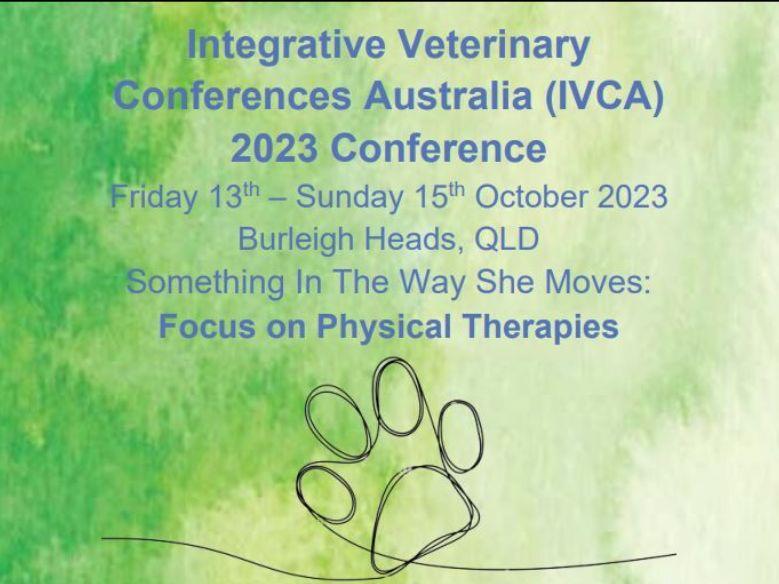
Complementary Veterinary Medicine

Branch of the New Zealand Veterinary Association

CVMB are really excited to have been offered the opportunity to provide a series of on line learning opportunities through the offices of the New Zealand Veterinary Association.
From our perspective it can be seen to be a reflection on the changes of attitudes of many in our profession towards what in the past has often been regarded as the less than credible face of veterinary medicine.
From our members viewpoint it presents an amazing opportunity to engage with some of New Zealand’s best practitioners and learn about modalities and treatment options that are geared towards everyday practice in your clinic.
At this point Shannon Leader is working with us to look at developing these programmes but what we need from you is some feedback on what you would like to see offered.
During conference we will be surveying delegates for their preferred topics of interest in order to ensure that we listen to what your wants and needs are and develop our programmes accordingly.
Exciting times! It’s taken one hundred years to get here but I think we are finally starting to make that all important difference and impact.
Complementary Veterinary Medicine
Branch
New Zealand
Environmental health is imperative for a sustainable future but sadly our natural resources are being depleted and we all need to do everything that we can to help make a difference and ensure that we preserve our planet for future generations.

Our One Health model, which reflects the inter-dependence of human, animal and environmental health, has vets perfectly positioned to make a difference and lead the way. But for our profession to lead we also need to be socially and financially sustainable and know how to look after our people.
The SustainaVet Practice Group has recently been established to help facilitate this and invite you to be a part of helping to drive positive change in our vet industry and out. Please have a look at Facebook and Instagram pages:
https://www.facebook.com/SustainableVetPracticeNZ and https://www.instagram.com/sustainavetpracticenz/
We would love to have your input!
If you have a specific project or strategic interest in SustainaVet Practice, please e- mail liza@holisticvets.co.nz with an outline so that we can work together and leverage win- win outcomes.
 of the
Veterinary Association Complementary Veterinary Medicine Branch of the NZVA – Winter 2023
of the
Veterinary Association Complementary Veterinary Medicine Branch of the NZVA – Winter 2023